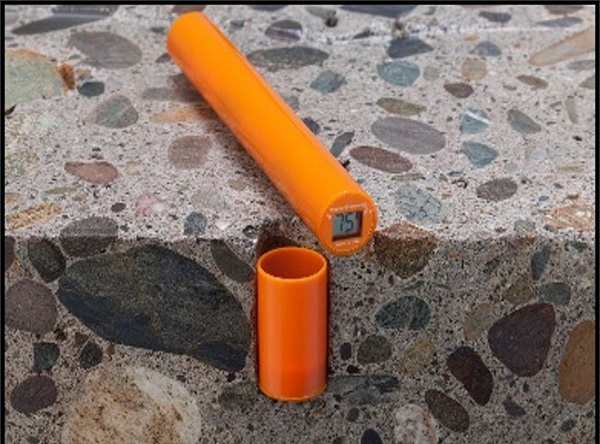Everything You Need to Know About Moisture Testing for Commercial Waterproofing
Author: Amy Freeman | August 7, 2024
Before installing any impermeable membrane on top of a concrete slab, whether it's a coating system, ceramic tile, vinyl flooring or laminate, moisture testing is a must. Due to the structure of concrete slabs, moisture issues aren't uncommon. The sources of moisture can be from a number of sources, including water that remains after the concrete has initally cured, water from broken pipes or other nearby sources, and natural water sources such as groundwater or precipitation.

Various types of moisture tests exist to help you determine the extent of the problem and the best way to move forward with waterproofing.
Types of Moisture Tests
The right moisture test will help you get to the bottom of an issue and decide on the best way to apply impermeable coatings. In some cases, running several or all types of moisture tests may be the right option. It is important that the manufacturer of waterproofing material be consulted and that the results of these tests are shared with them. Manufacturers will have designated moisture thresholds for their materials based on these tests.
1. ASTM D4263
ASTM D4263, also known as the Standard Test Method for Indicating Moisture in Concrete by the Plastic Sheet Method, involves taping a plastic sheet to concrete and waiting a minimum of 16 hours. At that point, the plastic is removed and both the sheet and the concrete are observed for visible signs of moisture. This can be condensation on the back of the sheet or a darkening of the concrete surface.
While ASTM D4263 can be useful, it also has its limits, since it only measures surface-level moisture, not moisture that may be within the concrete itself.
2. ASTM F1869
Also known as the Standard Test Method for Measuring Moisture Vapor Emission Rate of Concrete Subfloor Using Anhydrous Calcium Chloride, ASTM F1869 involves placing a dish with calcium chloride on top of a concrete surface. Before the test begins, the dish of calcium chloride is weighed. The dish is covered with an airtight dome for 60 to 72 hours. After that, the dish is weighed again.
The difference in weight is used to calculate the amount of moisture released during the test. This moisture is measured in pounds of moisture released in a 24-hour period over a 1000 sq.ft. area.
It's important to note that false readings are possible with ASTM F1869, as much of the moisture vapor emission measures during the test comes from the top half-inch of concrete.
3. ASTM F2170
To take moisture readings at various levels of concrete, you need to use probes. ASTM F2710, or the Standard Test Method for Determining Relative Humidity in Concrete Floor Slabs Using in situ Probes, involves drilling into a concrete slab and then inserting probes into the holes. Generally the probes remain in the hole for a period of 24 hours prior to being read. The test result shows the relative humidity percentage within the slab.
4. ASTM F2659
ASTM F2659 is a nondestructive moisture test that uses an electronic moisture meter to measure the water content of concrete. The electronic meter provides instant results, but its accuracy can be affected by the composition of the concrete or the presence of rebar.
What Affects the Results of Moisture Tests
Several factors can impact the results of a moisture test, such as the age of the concrete. When freshly poured, concrete contains more water than a slab that has had time to cure and dry out. Ambient humidity levels and temperatures can also affect the drying time and moisture level of the concrete.
The composition of the concrete can also affect the results of a moisture test. For example, ASTM F1869 is not an effective test if the concrete has been treated with leveling compounds or coated.
Time can also affect moisture testing. Concrete continues to dry, meaning it continues to release moisture into the air. Subtle movements in the ground over time can also impact the amount of moisture released.
Moisture Testing Best Practices
What can you do to ensure the accuracy of your moisture testing results and get your project off to a good start? First, it's important to understand the limitations of each type of test. ASTM D4263 and ASTM F1869 can only tell you so much. The results of these two tests can change based on fluctuations in temperature, relative humidity or sunlight. The composition of the concrete also affects the results.
As a good rule of thumb, consider conducting multiple types of moisture tests before installing an impermeable surface on top of concrete. Once you have the test results, follow the recommendations on the product you want to apply to ensure a long life free from bubbles, blisters and other types of moisture damage. And as stated before, always consult with the manufacturer of the material to determine the acceptable moisture levels for the specific system being installed.
Moisture testing isn't foolproof, but it can go a long way toward ensuring the stability and longevity of your project.